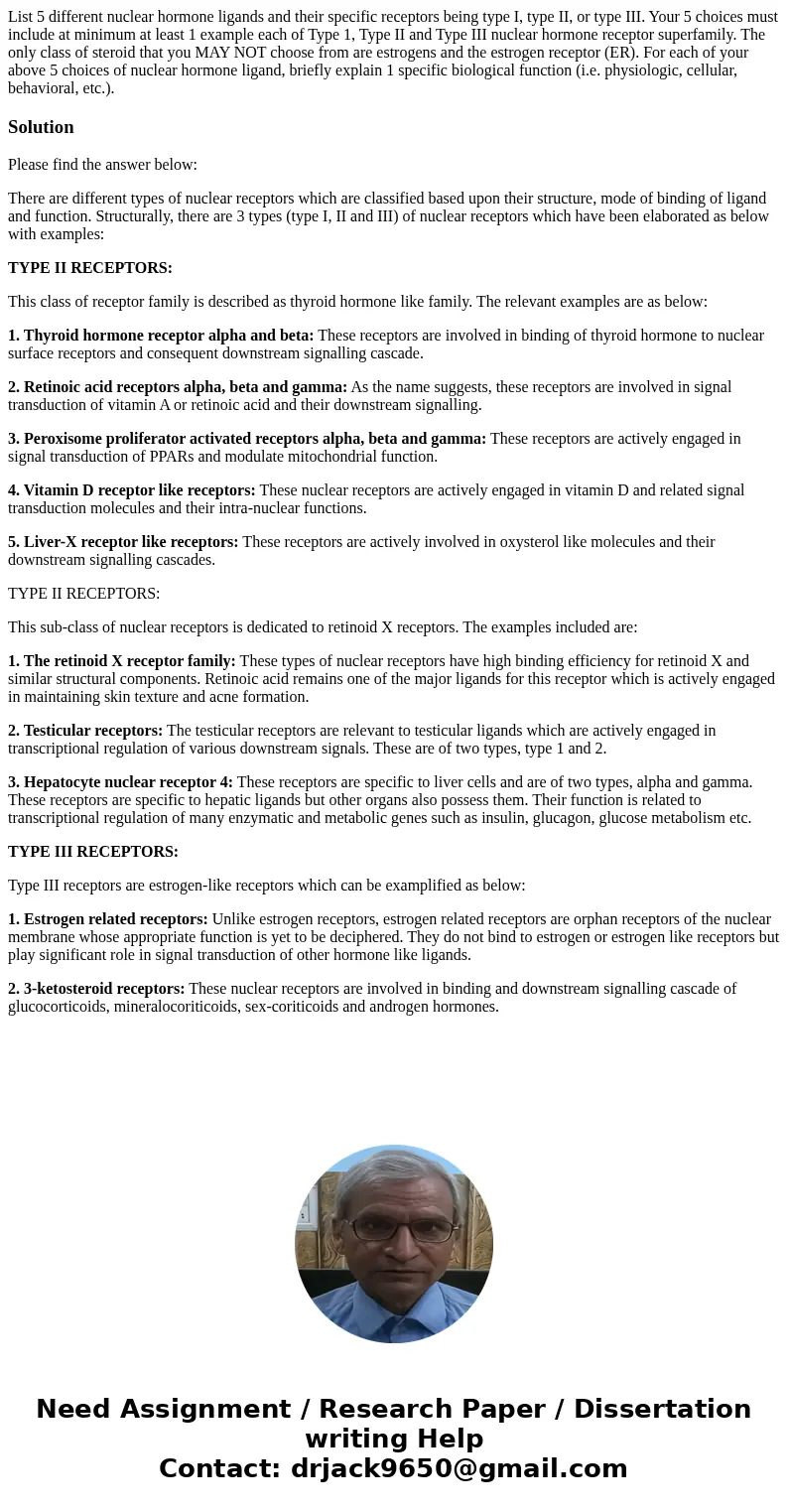List 5 different nuclear hormone ligands and their specific
Solution
Please find the answer below:
There are different types of nuclear receptors which are classified based upon their structure, mode of binding of ligand and function. Structurally, there are 3 types (type I, II and III) of nuclear receptors which have been elaborated as below with examples:
TYPE II RECEPTORS:
This class of receptor family is described as thyroid hormone like family. The relevant examples are as below:
1. Thyroid hormone receptor alpha and beta: These receptors are involved in binding of thyroid hormone to nuclear surface receptors and consequent downstream signalling cascade.
2. Retinoic acid receptors alpha, beta and gamma: As the name suggests, these receptors are involved in signal transduction of vitamin A or retinoic acid and their downstream signalling.
3. Peroxisome proliferator activated receptors alpha, beta and gamma: These receptors are actively engaged in signal transduction of PPARs and modulate mitochondrial function.
4. Vitamin D receptor like receptors: These nuclear receptors are actively engaged in vitamin D and related signal transduction molecules and their intra-nuclear functions.
5. Liver-X receptor like receptors: These receptors are actively involved in oxysterol like molecules and their downstream signalling cascades.
TYPE II RECEPTORS:
This sub-class of nuclear receptors is dedicated to retinoid X receptors. The examples included are:
1. The retinoid X receptor family: These types of nuclear receptors have high binding efficiency for retinoid X and similar structural components. Retinoic acid remains one of the major ligands for this receptor which is actively engaged in maintaining skin texture and acne formation.
2. Testicular receptors: The testicular receptors are relevant to testicular ligands which are actively engaged in transcriptional regulation of various downstream signals. These are of two types, type 1 and 2.
3. Hepatocyte nuclear receptor 4: These receptors are specific to liver cells and are of two types, alpha and gamma. These receptors are specific to hepatic ligands but other organs also possess them. Their function is related to transcriptional regulation of many enzymatic and metabolic genes such as insulin, glucagon, glucose metabolism etc.
TYPE III RECEPTORS:
Type III receptors are estrogen-like receptors which can be examplified as below:
1. Estrogen related receptors: Unlike estrogen receptors, estrogen related receptors are orphan receptors of the nuclear membrane whose appropriate function is yet to be deciphered. They do not bind to estrogen or estrogen like receptors but play significant role in signal transduction of other hormone like ligands.
2. 3-ketosteroid receptors: These nuclear receptors are involved in binding and downstream signalling cascade of glucocorticoids, mineralocoriticoids, sex-coriticoids and androgen hormones.

 Homework Sourse
Homework Sourse